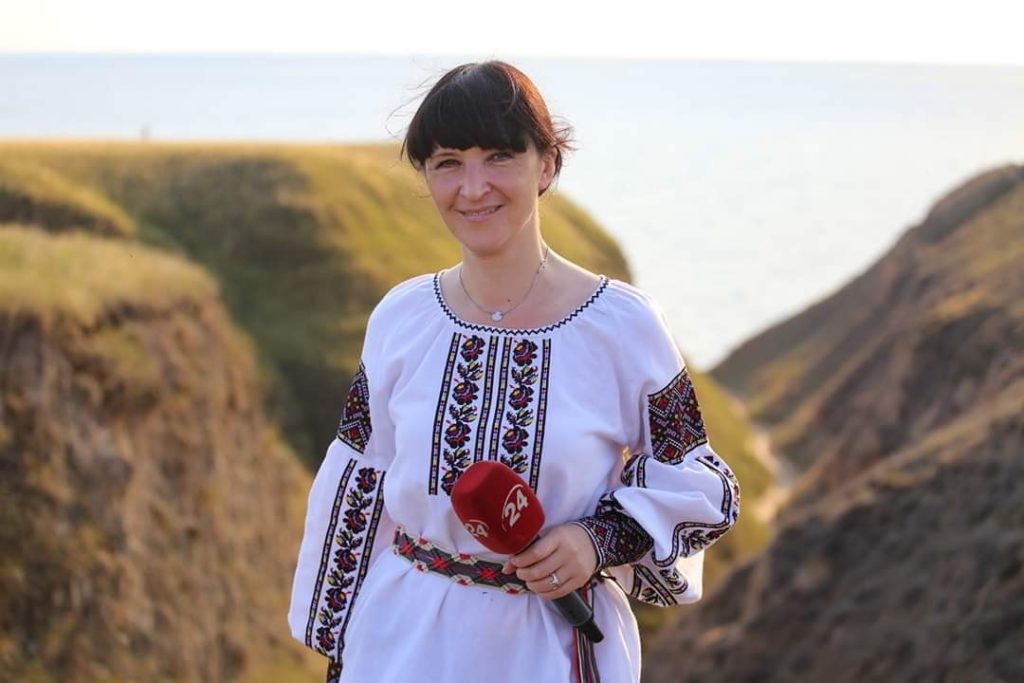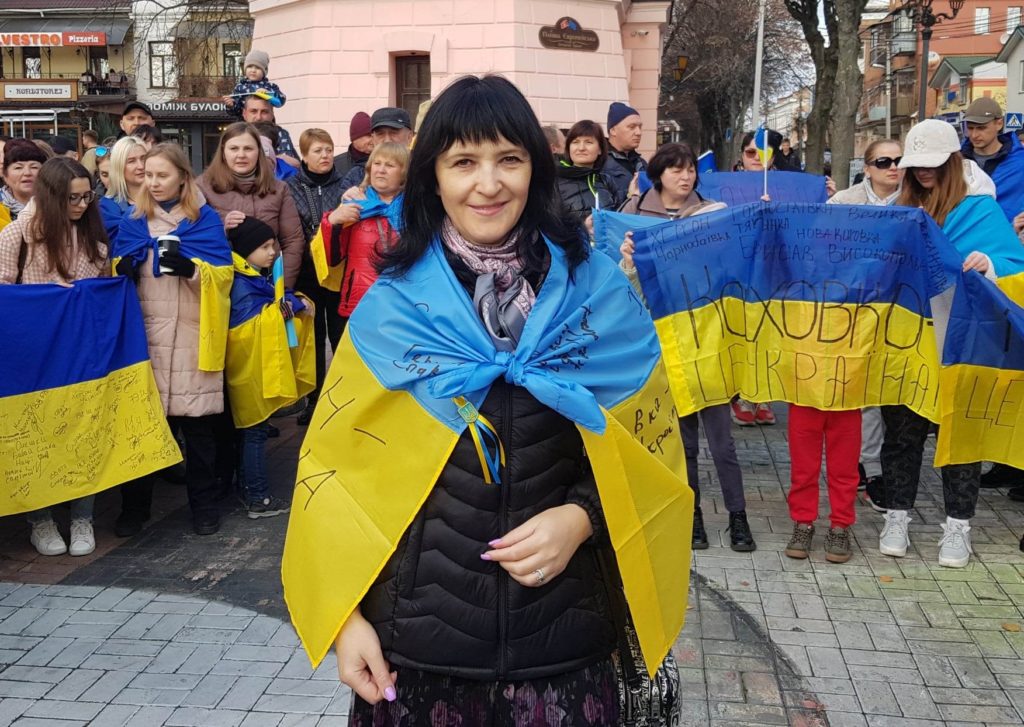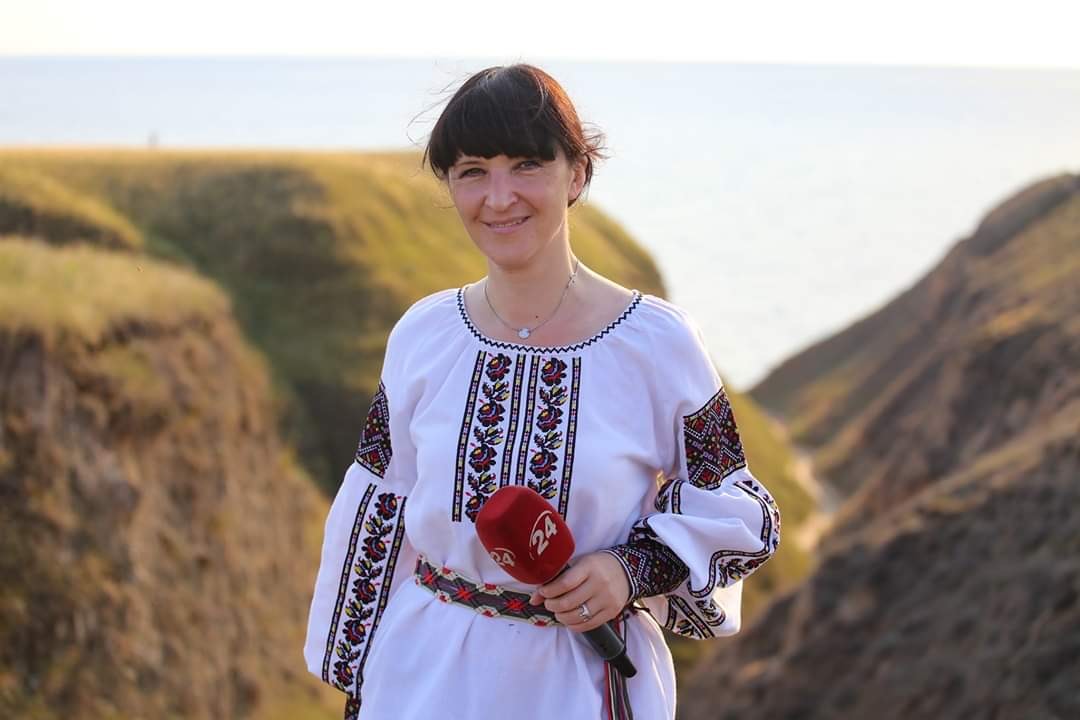This story is adapted from an article originally published in Ukrainian by Educational Human Rights House Chernihiv.
Savchenko was born on the left [west] bank of the Dnipro River in the Kherson region, which currently remains under Russian occupation. She spent most of her life in Kherson, where she worked as a journalist for nearly 25 years.
Before and after Russia’s full-scale invasion
“Before the full-scale war, everything in my life was fine. Even now, I don’t consider everything in my life bad. The main thing is that I am alive and not where the occupiers are. But I never thought I would end up in such a situation. Before the full-scale war, I was the kind of person who couldn’t be easily shaken.”
“In the city where I had lived and worked for so many years, I had probably achieved everything possible in my profession. I even thought it might be time for me to move somewhere else. But as they say, ‘be careful what you wish for’. It turned out I had to leave the city but [I would never imagine it to be] at such a cost, in such a way.”
The full-scale war divided my life into ‘before’ and ‘after.’ I no longer thought about whether to stay in the profession or not; I thought about whether I would survive or not.
At the start of the invasion, Savchenko was a TV correspondent at 24 Channel and a journalist for the local media Novy Den (“New Day”). She says that the Novy Den website was among the top three in the region, with its newspaper being the most popular, read in every rural area.

“We reached every village, writing about people in remote areas. When the full-scale war began, we faced a choice: whether to continue writing or shut down. We decided to keep working. But when our colleague, Oleh Baturin, a journalist from Nova Kakhovka, was captured, the director [of Novy Den] said he couldn’t risk the lives of our journalists and suspended the publication. Additionally, our website faced hacking attacks.”
“It was a very tough situation. Some of our team left Kherson earlier, and I stayed in the occupation for some time.”
Savchenko worked to show what was happening in Kherson during the occupation.
“For the first month [of the occupation], I appeared on 24 Channel, but I later realised it was unsafe. I then appeared without showing my face or using my name. Eventually, I understood my voice could still be recognised. So, I asked the channel to stop showing me, but I sent them videos I had or saw on social media. I wanted all of Ukraine to know more about what was happening in Kherson. It seemed to us that little was said about [the situation] in our city. Even now — during the shelling — little is being said.”
Savchenko shared that the threat to her safety was omnipresent during the occupation.
“During the occupation, the FSB operatives in Kherson hunted me. They knew who I was and tried to lure me out of my home. But the thing is, I didn’t live at my registered address.”
“I received strange messages in my messenger from acquaintances who couldn’t have written such things. I understood it was the ‘comrade major’ [FSB operative] messaging. Then they called, trying to find out where I was. I understood what this could lead to, so I simply removed the SIM card from my phone.”
“I knew that I was well-known in Kherson. In addition to working as a journalist for over 20 years, I also hosted a well-known crime project on television for 10 years. Many people recognised me by face. Because of this, whenever I went out into the city, I had to change my hairstyle and wear glasses.”
Life under occupation
Savchenko says it was very hard to find food in the first days of the occupation.
“In the first days of the war in Kherson, there was a food shortage.”
Some girls who lived on the ground floor of our building came to me. They said there would be free bread distributed somewhere in the city and asked if they should get some for me. Of course, I said yes. It was incredibly touching.
“This bread was as hard as a brick, you could bang it on the wall. But I was so grateful for those two loaves; words can’t describe it. I never thought I would live to see this.”
“My grandmother, who lived through [World War II], always said, ‘All these hardships you complain about are nonsense. The main thing is that there is no hunger and no war.’ Neither she nor I ever thought our generation would face this.”
Savchenko adds that grocery stores were nearly empty. However, she had a friend who owned a store, and she would call him to ask if he had anything available. She recalls that there were always long lines at his store.
“In essence, this man helped me survive. Kherson residents helped each other survive. I remember one girl brought me some canned goods and some cabbage.”
Escape from occupation: 3 attempts, 4 days of travel
“I only managed to leave on my third attempt.”
Savchenko recounts that she attempted to leave the occupation three times through different routes, but the [Russian military] turned the convoys back. It took her four days to get from the occupied Kherson to Vinnytsia [around 500 km towards west-central Ukraine], with the journey being very expensive.
“The road could have been one-way. But I was just lucky. The transporter, who charged a lot, probably had some connections, and he managed to get me out. I warned him that I was a journalist and likely on the FSB’s lists. But he agreed.”
Savchenko is still based in Vinnytsia. Kherson was liberated in November 2022, but she cannot return because of constant shelling and the fact that she has nowhere to return to—her home was recently destroyed.
“The house I lived in was located in the Dnipro district. Not far from there, just across the Dnipro River, the [Russian military forces] are stationed, and everyone is afraid to go there. Shelling happens almost daily.”

Savchenko continues to work as a journalist, occasionally travelling to Kherson. She says Kherson residents are resilient people who carry the city on their shoulders.
Support from Educational Human Rights House Chernihiv
In 2024, Savchenko received financial and psychological support within the Protection Program of Educational Human Rights House Chernihiv.
“It was unexpected but so needed. The [financial support] I received not only helped but saved me. However, the most important thing for me was psychological help.”
“After [the therapy sessions], I feel like I can handle anything. No matter how difficult the circumstances, a person must think about how to help themselves. The psychologist encouraged and helped me discover new strengths. That’s when I realised I could do anything.”
Maryna Savchecko is one of many human rights defenders and journalists supported by Educational Human Rights House in Chernihiv as part of their Protection Program.
This support was provided under the framework of Emergency Support Ukraine (ESU) – a regional project that provides opportunities for emergency support for Ukrainian civil society and independent media in the wake of the full-scale Russian invasion. ESU is funded by the European Union and implemented by ERIM-led coalition of partners, including Human Rights House Foundation.
This publication is also available in Ukrainian via EU NEIGHBOURS east.





